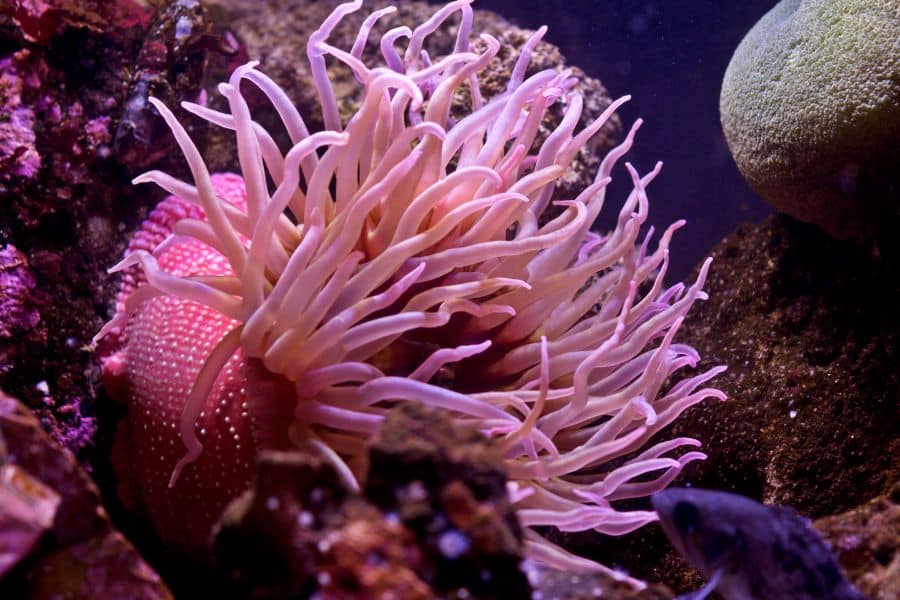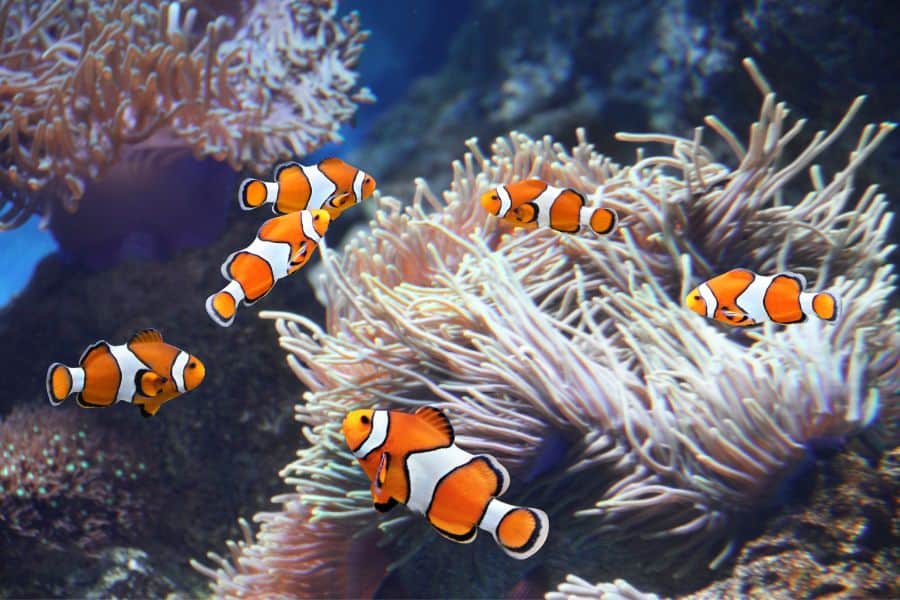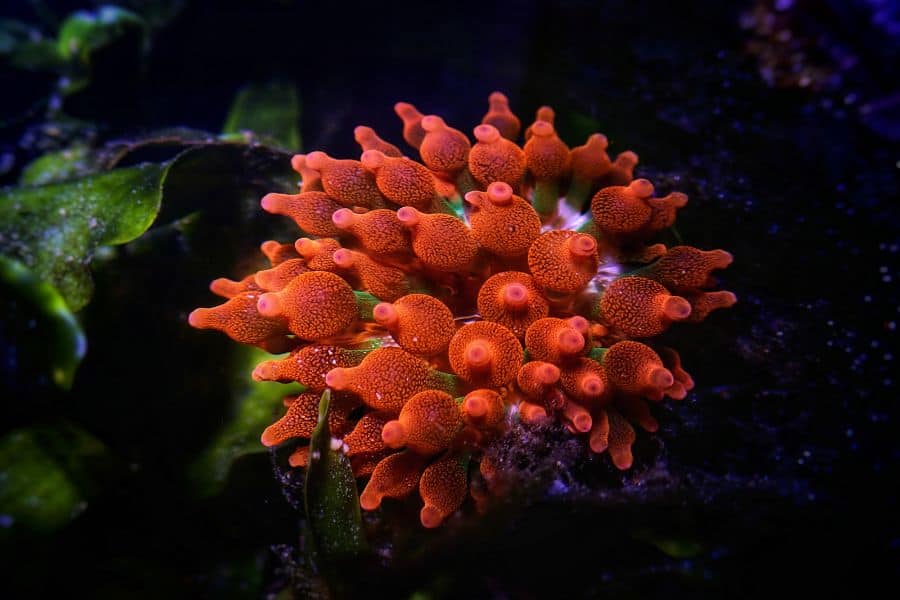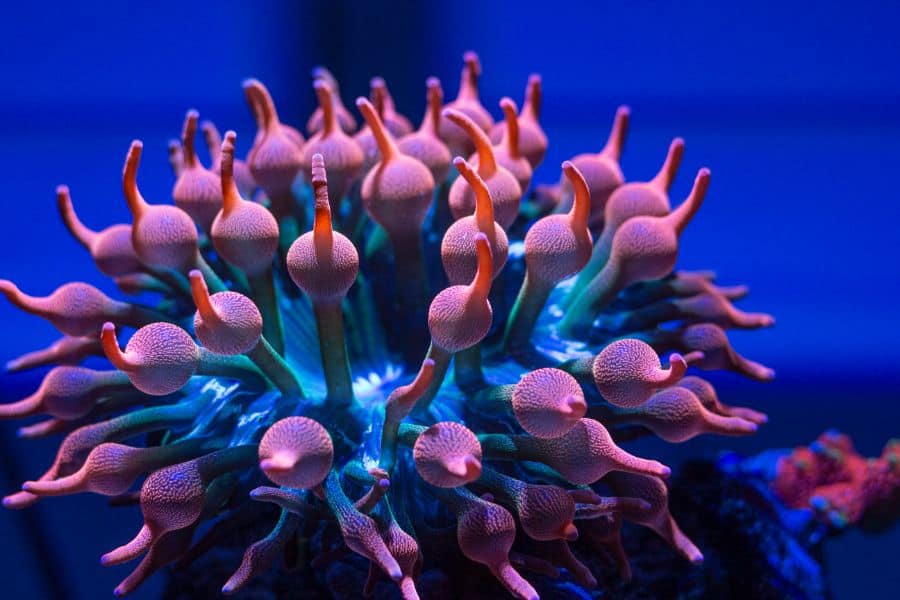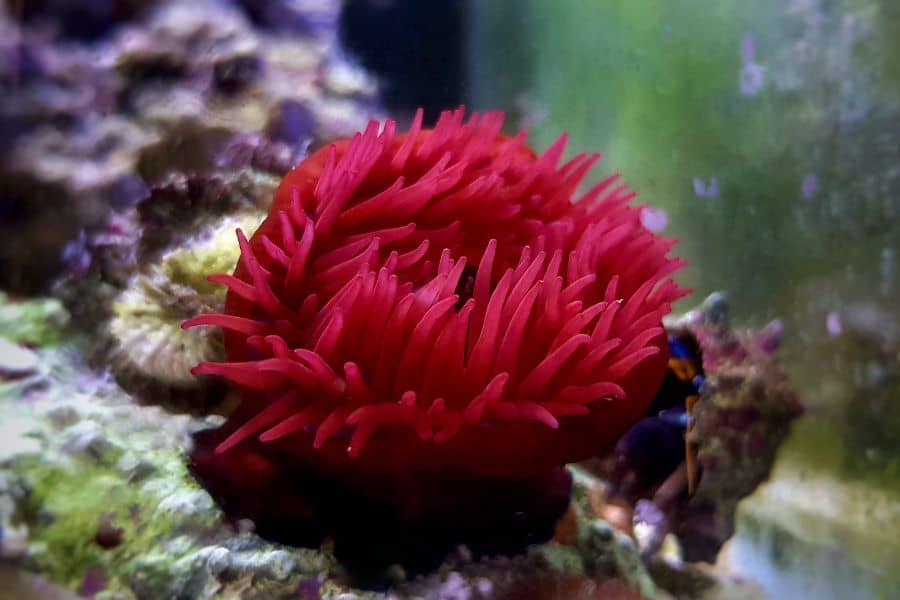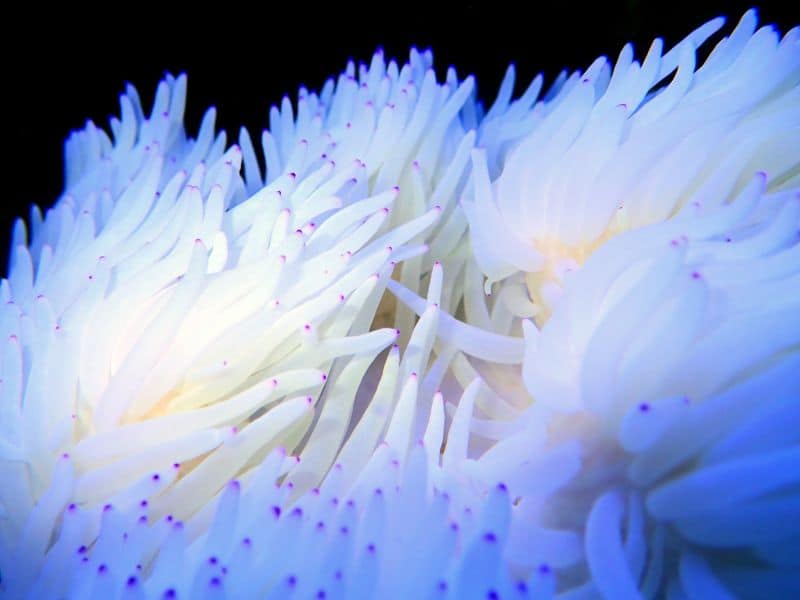When it comes to a saltwater aquarium, your choices of what to keep are endless. Aside from a wide variety of reef fishes and corals, sea anemones are also one of the most frequently chosen by saltwater aquarists.
Aside from adding beauty to your aquarium, sea anemones spark interest and often become the topic of conversation to anyone who views it.
Staring at the gentle swaying of its tentacles can be hypnotic. But before you get hypnotized and go into deep relaxation, you may wonder what kind of organisms sea anemones are. Are they easy to keep and maintain? Do they do well with other tank residents?
Join us in this article as we dive deep into the life of sea anemones.
Characteristics of Sea Anemones
Due to the colors they display, sea anemones got their names from the terrestrial anemone plant. However, sea anemones are not plants, although they look similar.
Sea anemones are animals, specifically marine invertebrates (without a backbone), and are closely related to corals and jellyfish.
Tubular Body
We know you are already familiar with their tentacles since it is the part we often see in sea anemones. But you also have to be familiar with their tubular bodies.
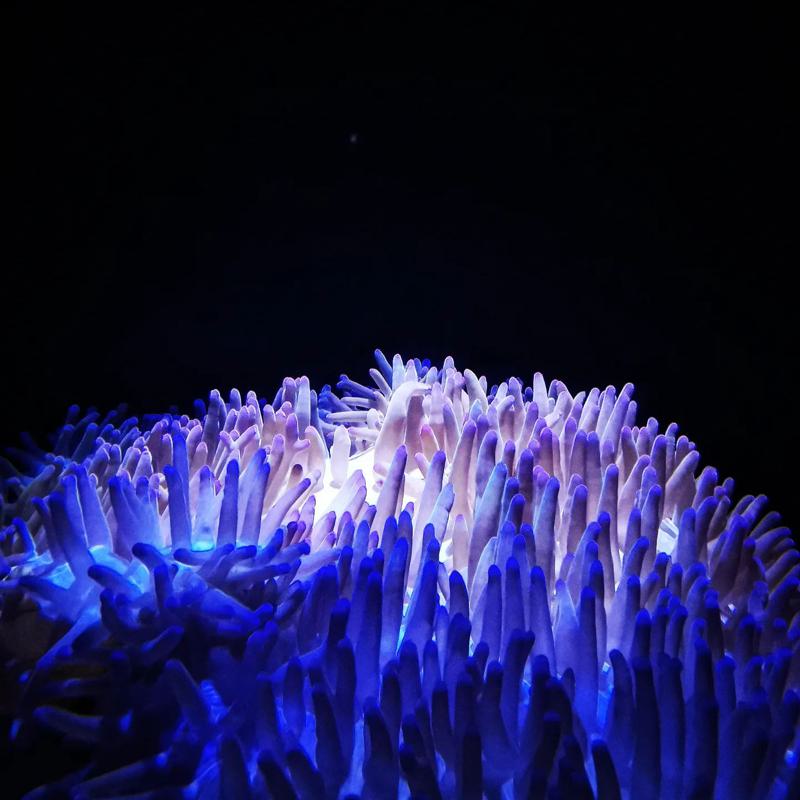
At the upper end of their tubular body is a central mouth surrounded by the tentacles we see. On the other end is the basal foot, used primarily to attach the body to a substrate.
Swimming Capability
Although there are free-swimming species, most sea anemones are stationary. For non-moving sea anemones, their basal foot is like an adhesive and allows them to stick and grow in any substrate.
However, this does not mean they are stuck forever in the same spot. Surprisingly, non-moving sea anemones can swim, especially when their environment is not conducive to growth or in the presence of predators (like sea turtles).
Sea anemones can detach their basal feet and swim away by bending and turning their tubular body. Once they get into a safe spot, they stop flexing their body, settle down, attach again their basal foot and continue with their growth.
Toxin-Loaded Tentacles
Looks can be deceiving, especially for the tentacles of sea anemones.
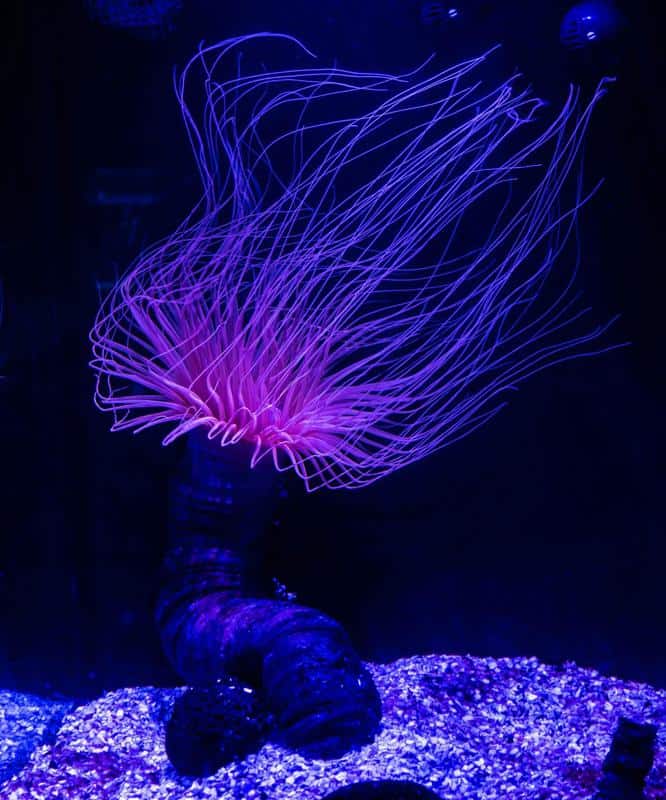
Although soft and gentle-swaying, poison darts called nematocysts packed the tentacles of a sea anemone.
While the number of tentacles varies per species, what is certain is that every tentacle contains the nematocyst toxin. And be aware that nematocysts are not just any ordinary poison. It is a neurotoxin. A small amount has the power to paralyze (not just hypnotize) and kill small organisms like crabs, shrimps, and tiny fish.
Touch-Induced Predation
Being a predator, it is surprising that sea anemones only rely on touch to trigger the release of nematocysts. Despite being their sole mechanism, it is hypersensitive even with the slightest contact.
When prey touches a tentacle, poison darts containing the nematocyst are shot and injected. The poison dart acts like a harpoon and holds the catch while the toxin is transmitted. In a few seconds, paralysis will set in, and once killed by the neurotoxin, the tentacles slowly retract and lead the prey into its mouth, devouring it as a whole.
Fun fact. Sea anemones can differentiate the edible from the inedible. It is why you see the spitting of indigestible parts like bones and shells out of their mouth, which also acts as a channel to excrete waste.
Cloning and Other Means of Reproduction
Sea anemones reproduce sexually and asexually.
Sexually, sea anemones release sperm and eggs. Surprisingly, the release of their gametes passes through the same channel where they take in food and excrete waste – their mouth.
As the eggs get fertilized in mid-water, they drift with the water flow. From fertilized eggs to larvae, baby sea anemones settle down to a new site to form a new colony.
In asexual reproduction, a single sea anemone breaks and splits into two sea anemones. The process of splitting is called binary fission.
Sexual reproduction rarely happens in an aquarium setting. Asexual reproduction through binary fission is often the reproductive mode for tanked sea anemones, and this happens when it reaches a minimum size.
There are advantages and disadvantages between sexual and asexual reproduction in sea anemones.
In sexual reproduction, the genetic material of the baby sea anemones is different, making them resilient and adaptive with a higher chance of survival. However, this process is slow and takes time.
On the other hand, asexual reproduction is fast. You can have two adult sea anemones in no time. However, their genetic material is identical, making them a clone. With the lack of genetic diversity, the population of cloned sea anemones can easily collapse, especially if there is a sudden change in environmental parameters.
Co-Living with Marine Organisms
Although the nematocyst toxin packed the sea anemones, certain marine organisms can cohabit within its confines in a 2-way relationship called symbiosis.
Clownfish
Also called anemonefish, the clownfish is one of the few marine organisms adapted to live with sea anemones, and they are the perfect model of a symbiotic relationship.
Sea anemones provide shelter and protection for the clownfish, and in return, the clownfish provides the sea anemone with nutrients from its waste.
But you may wonder why the nematocysts in sea anemones do not affect the clownfish. It is because this brightly colored fish has a protective mucus in its skin that acts as a shield against the poison.
Aside from clownfish, other marine organisms can live with sea anemones, like anemone shrimps, porcelain crabs, and juvenile domino damselfish.
Symbiotic Algae
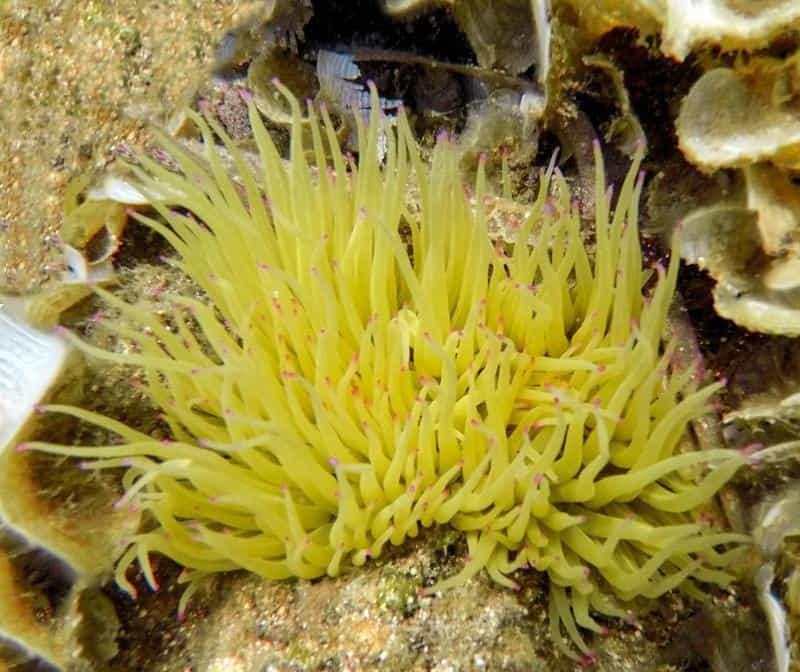
Although sea anemones are animals, their body tissues are the refuge of microscopic marine algae – the zooxanthellae.
Zooxanthellae is a common feature of all organisms under the cnidarian family. But what sets sea anemones apart from their cousins (corals and jellyfish) is that, in some species, they hold another single-celled green alga – the zoochlorellae.
Both of these algae have a symbiotic relationship with sea anemones. With the protection they get from sea anemones, these marine algae will photosynthesize and produce oxygen and food in return.
How to Add and Maintain Sea Anemones
Be ready to spend time and effort in keeping sea anemones. They require preparation and attention.
Having sea anemones is not as easy as having tropical reef fish. Once you have them after purchase, you cannot just place them directly in the tank, which in this case, has become the common mistake of newbies.
Stocking in Mature Reef Tank
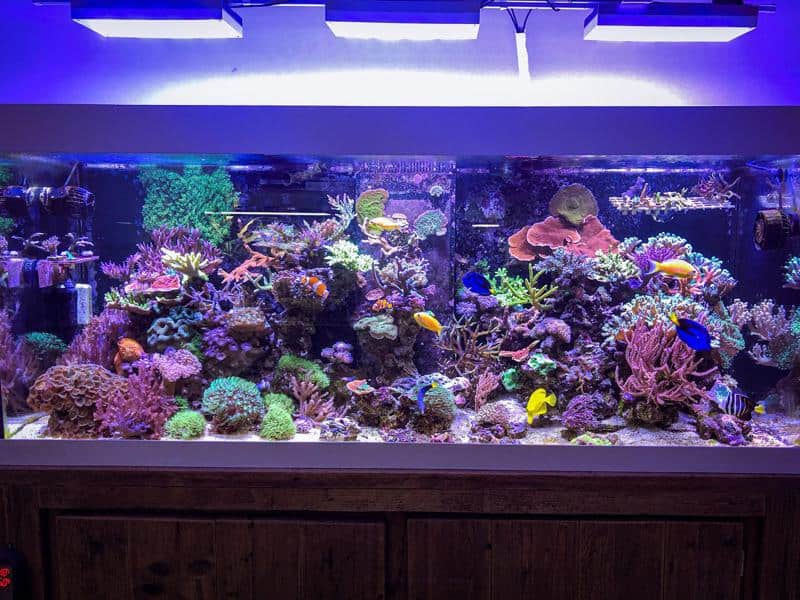
A significant aspect of every saltwater reef tank is it should be going through the nitrogen cycle. As your reef fish breathe and excretes waste, it releases ammonia that is toxic to your fish and other inhabitants.
But don’t worry. Natural removal of ammonia is possible.
All you need to do is provide your tank with a substrate at least 3 inches deep. Common substrates used in a reef tank are sand and pebbles. Since the substrate has less oxygen, it promotes the production of denitrifying bacteria.
When the number of denitrifying bacteria blooms over time, their anaerobic nature will consume the ammonia and convert it into less toxic substances: nitrites and converted again into nitrates. Despite having less potency than ammonia, nitrites and nitrates are still harmful to your fish and other inhabitants.
Over time, the denitrifying bacteria will break down the nitrate and convert it into nitrogen gas, which then exits into the atmosphere.
It only takes a few weeks for the nitrogen cycle in a saltwater aquarium to become established. However, water parameters can still fluctuate for up to six months.
It takes at least a year for water parameters to become stable, and this is the only time you can consider your reef tank matured.
For a new tank, this equates to a one-year waiting period before you can add sea anemones.
But why wait for a year? Sea anemones are very sensitive to change and cannot handle even the slightest stress.
Knowing this, do not purchase sea anemones if you don’t have at least a year-old mature reef tank.
Proper Placement
Once you have a mature reef tank, you can focus on stocking and placing your sea anemone.
But where? On what part of the tank?
The placement will depend on the species of sea anemones. Some like it mid-water while attached to a rocky crevice, while others like it buried on the substrate. So it is best to know their preference so you can prepare ahead of time.
Do not worry if you mistakenly placed sea anemones in the wrong spot. Remember that they can swim and will move to look for the best area.
Once settled down, give your sea anemones a week to adjust to their new environment. Feeding and manual transferring are discouraged within this period.
Proper Spacing
You must observe proper spacing if you have more than one sea anemone in a single tank.
If they are too close to each other, their tentacles may come across and may result in a fight. Since they are non-moving, their battle is through their tentacles. They hit each other’s tentacles and may inject stinging cells.
Usually, a sea anemone battle is between 2 different species. However, clones will still fight off if the space created by their fission or breakdown is very close.
Proper spacing also applies to other non-moving residents, like corals.
Transfer when Necessary
Transferring your sea anemones is not necessary except for the following conditions:
- 2 or more sea anemones swim off and settle down in a single spot. It usually happens when they compete for the best location, commonly on the elevated portion of a rock.
- 2 or more clones broken down too close to each other
When these events happen, you should transfer and relocate one or more sea anemones.
Never touch the tentacles and their tubular body. Only handle them on their basal feet.
Do not pull. Massage the basal feet gently and work your way until it is released, then transfer them to the appropriate site.
Transferring requires practice. Handling and releasing a suction cup would be good training before you proceed with the actual transfer and relocation.
Just in case the sea anemones swim and converge back to the same spot you took them off, we suggest you refrain from doing a second transfer. That area could be the best spot for their growth and survival, and that is why they keep coming back. Let nature take its course.
Maintenance of Water Parameters
Aside from requiring good water quality, sea anemones demand a specific range of water parameters.
While there is a slight variation between species of sea anemones, these are their general water parameters:
| Parameters | Range |
| Dissolved oxygen | High |
| pH | 8.1 – 8.3 |
| Salinity | 1.024 – 1.026 |
| Water temperature | 24.4 – 25.5 °C (76 – 78 °F) |
| Alkalinity | 8 – 12 dKH |
| Ammonia | 0 ppm |
| Nitrites | 0 ppm |
| Nitrates | 0 ppm (can tolerate up to 2 ppm) |
| Calcium | 400 – 450 ppm |
| Magnesium | 1,250 – 1,350 ppm |
| Phosphates | 0 ppm (can tolerate up to 0.002 ppm) |
Provision of Strong Lighting
Sea anemones require intense lighting. But you may wonder why they need such increased brightness if they are animals and not photosynthetic.
Remember that sea anemones are host to two types of algae living within their body tissue. If your aquarium light is not intense, the glow may not reach the sea anemone and deprive the algae of photosynthesis. As an effect, the algae will not produce supplemental food for the sea anemone.
We recommend you use a lighting system designed for reef tanks with full spectrum luminance.
Moderate Water Flow
While a few species prefer a high flow rate, most sea anemones do well in a moderate flow.
Water must flow since sea anemones do not move once they settle in the substrate. It means that the only way they get oxygenated and get some of their food is through the water.
If water is stagnant, expect your sea anemones to be less oxygenated and may become malnourished. In a non-flowing water condition, nourishment of sea anemones will solely be from the zooxanthellae and zoochlorellae in their tissues, which is not substantial.
Feeding
Although sea anemones get nourishment from the algae living within them and the food available in the water, it is still best to feed your sea anemones.
Feed your sea anemones at least once a week. We highly recommend you feed them with shrimps, scallops, mussels, or any protein-rich seafood available at the grocery.
Since seafood products are frozen, make sure you thaw them. Sea anemones only require a small portion. Slice a small piece of the seafood to facilitate easy feeding.
Using a thong or stick, attach the seafood at one end and deliver the food to the sea anemone. Never send the food directly to its mouth. Instead, place the food in their tentacles.
In this way, you mimic the natural catching of prey in sea anemones. After a few seconds, you will see that their tentacles will grab the food you just introduced and lead them to their central mouth.
Types of Sea Anemones
Sea anemones are composed of more than 1,000 species living in an extensive range of habitats, and they live naturally in warm shallow waters to the cold abyss up to 3,000 meters deep.
While describing a chiliad of sea anemones is not possible in this article, the ones we will be presenting here are the common species kept in a saltwater aquarium.
Also, we intentionally place the types of sea anemones after their biology and keeping procedures. We deemed it essential to let you know first the details of sea anemones since they are not easy to care for and require attention.
Otherwise, if we go straight in choosing what type of sea anemone you want to keep without knowing their background, you may end up in a chaotic tank, and much worse, your sea anemone can die.
Bubble Tip Anemone
Of all the types of sea anemones, the Bubble Tip Anemone (Entacmaea quadricolor) is the most popular and the best sea anemone for clownfish.
Clownfish love the non-aggressive tentacles of a Bubble Tip Anemone, and they host the most species of clownfish. Their tentacles are long with bulb-like tips that can house both juvenile and adult clownfish. It can deflate during low lighting, creating a natural home variation.
The sexual reproduction mode of Bubble Tip Anemones in tanks is asexual. Through fission, each Bubble Tip Anemone can divide into two individuals.
With several color morphs and variations, the Bubble Tip Anemone has subtypes, as follows:
Rainbow Bubble Tip Anemone
Do not expect to see rainbow colors in this type of sea anemone. Instead, the Rainbow Bubble Tip Anemone is two-toned, with green and orange as the dominant color.
What makes the Rainbow Bubble Tip Anemone special is how arranged the colors are. The lower portion of their tentacles is green, while their bulb-like tips are orange.
Rose Bubble Tip Anemone
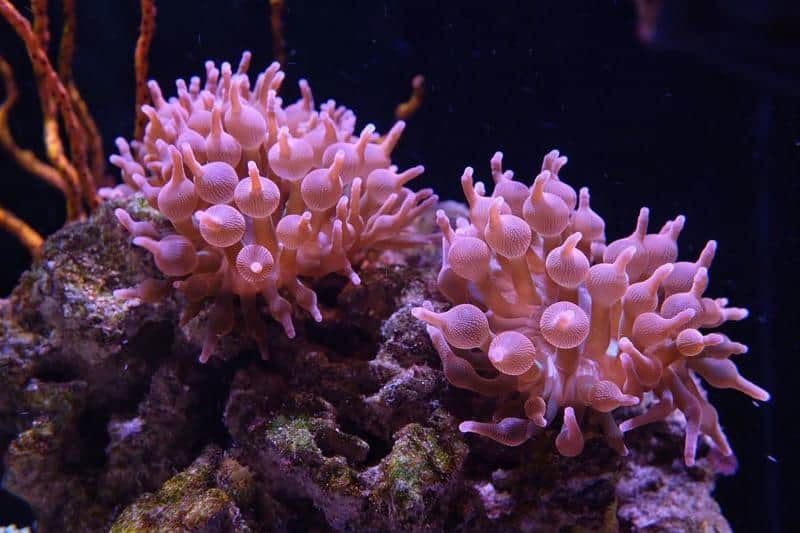
If you want to have a shade of red in your aquarium, then you should keep the Rose Bubble Tip Anemone.
While its base and mouth are greenish-white, the tentacles with bulb-like inflation at the tips are colored red. When fully bloomed, this sea anemone resembles a rose – a perfect gift for your loved one who’s into the saltwater aquarium hobby.
Colorado Sunburst Anemone
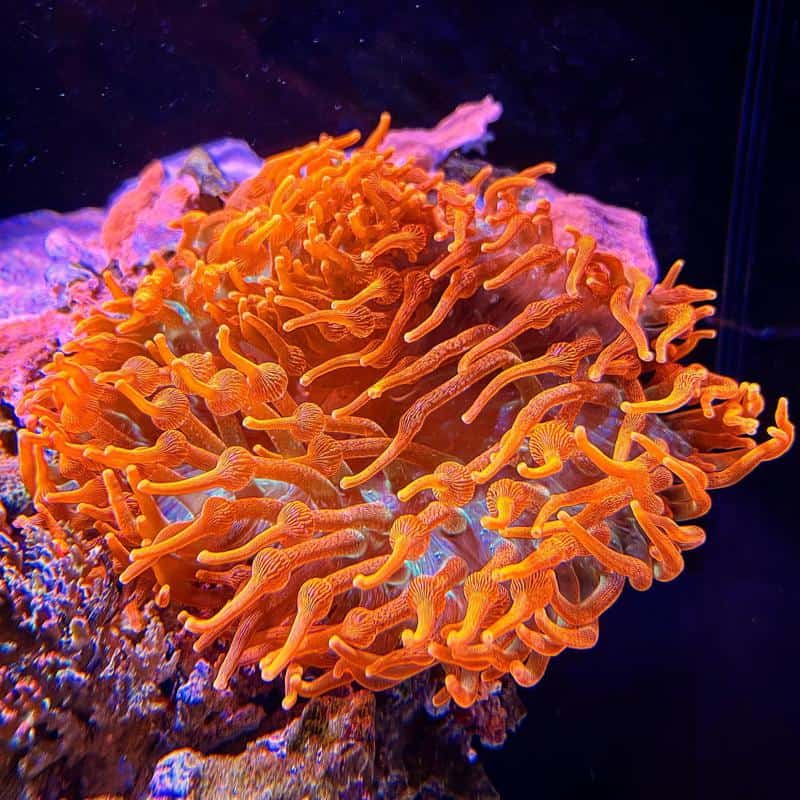
Wishing to keep a highly-attractive sea anemone that keeps everyone mesmerized? Go for the Colorado Sunburst Anemone.
The color morph of this Bubble Tip Anemone subtype is unique as it represents the flaring of our sun. The bluish-white coloration of the base and mouth perfectly contrast their bright-orange tentacles, where its movement looks like a solar flare.
Black Widow Anemone
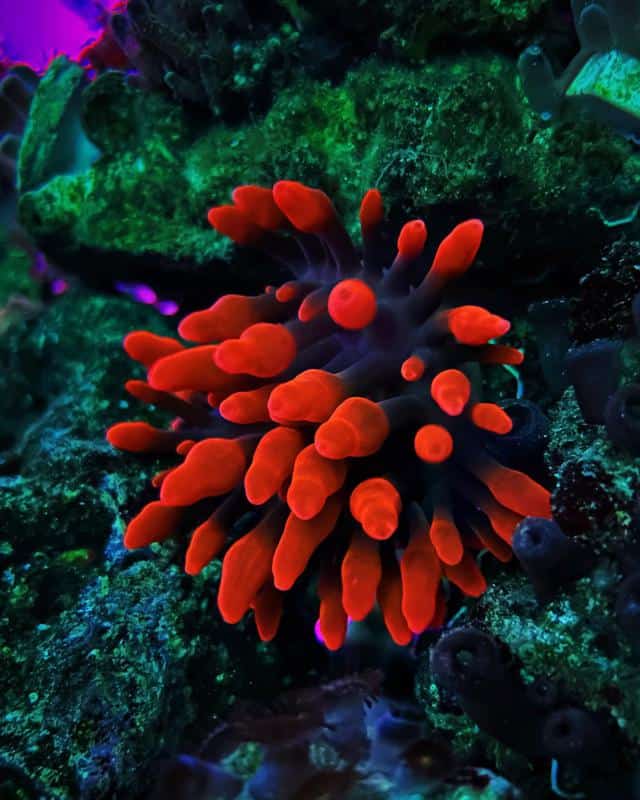
The color morph of this Bubble Tip Anemone subtype represents the red abdominal coloration in one of the most venomous spiders in the world – the Black Widow. Their red tentacles are concentrated at the edge of their blue-colored mouth.
Same with the Black Widow Spider, be cautious in handling the Black Widow Anemone as it can sting you, though not as potent as the spider they’re representing.
Rock Flower Anemone
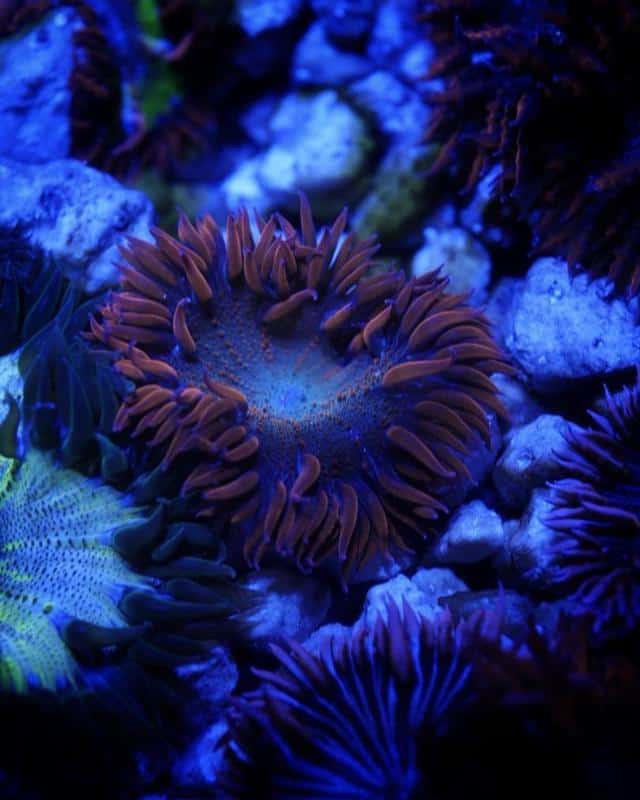
Rock Flower Anemone (Phymanthus crucifer) is another favorite for saltwater aquarists since they display color variation.
Their tentacles are small and located away from their mouth. But despite being tiny, their tentacles are numerous, and a single individual can carry up to 200 tentacles.
When the tentacles are out, they contrast the mouth creating an illusion like a field of flowers.
Starburst Anemone
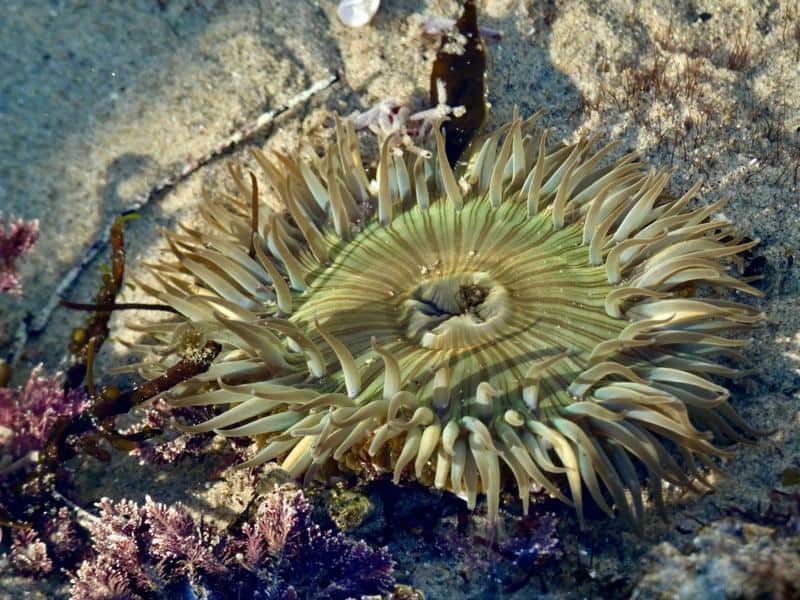
Also called a Sunburst Anemone (Anthopleura sola), this small-sized anemone can grow up to 5 cm in diameter. It has short tentacles with visible linear patterns converging toward its central mouth.
Starburst Anemone hides in a rocky crevice and away from other sea anemones.
Being solitary and isolated from the rest of the sea anemone colony does not mean they are afraid of being attacked. They are aggressive to fellow sea anemones and intruders coming near their territory.
Beadlet Anemone
Have you seen a red-colored sea anemone living near the aquarium surface? Most likely, what you saw was a Beadlet Anemone (Actinia equina). They got this characteristic from their wild trait as they naturally thrive near the water line of sheltered areas like bays and harbors.
The Beadlet Anemone is a medium-sized sea anemone that can grow up to 8 inches high and 10 cm wide.
With their surface-dwelling preference, the Beadlet Anemone is one of the few sea anemones capable of handling sudden parameter change. They can even survive outside of the water for a few seconds.
Be aware that the Beadlet Anemone is a subtropical species. They prefer to grow in cold water ranging from 18 to 20 OC.
Knobbly Anemone
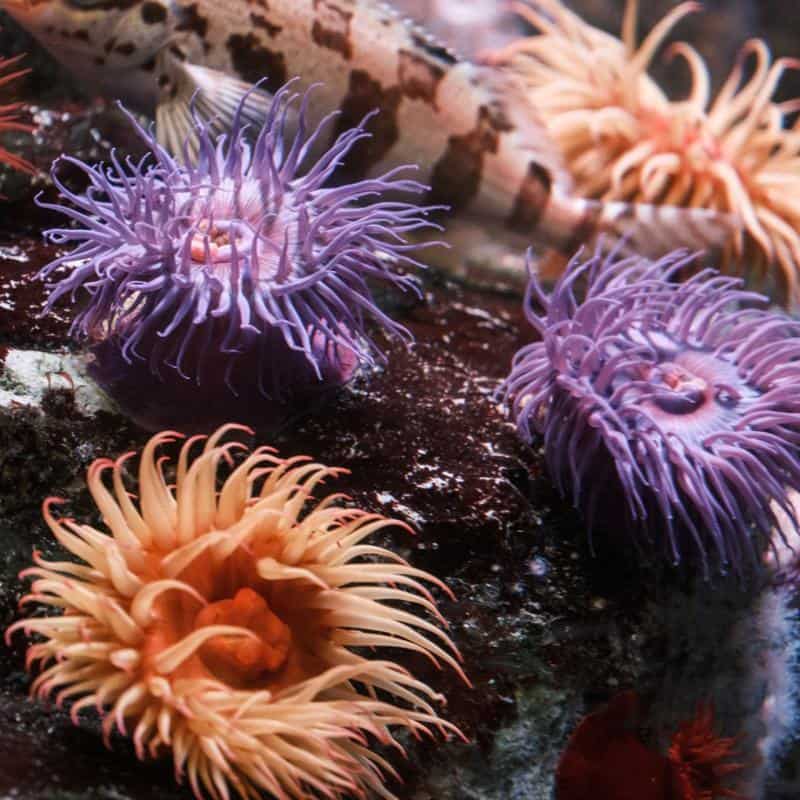
The knobbly Anemone (Bunodosoma capensis) is a medium-sized anemone that can grow up to 10 cm in diameter and prefers rocky terrain.
While they look like a doorknob when their tentacles retract, their name derives from the tiny protrusions in their tubular body that looks similar to a series of knobs.
Identifying this type of sea anemone using color is not applicable since they come in orange, purple, or a mixture of different pigmentation.
Condy Anemone
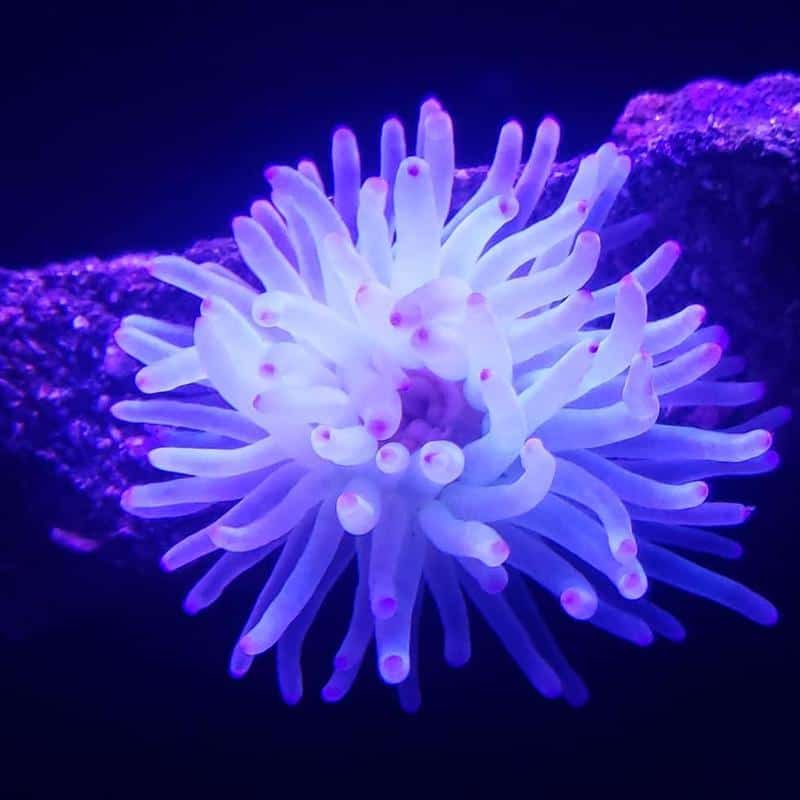
The Condy Anemone (Condylactis gigantea) is a large-sized sea anemone. In the wild, a Condy Anemone can grow up to 16 inches in diameter, but only 10 inches max in the aquarium.
A Condy Anemone is easy to identify. Aside from having a ball appearance, they have long tentacles tapering with a pink coloration at the tip, thus their other name: the pink-tipped anemone.
Aside from being large, be careful when handling them during stocking as they have a potent sting. Always wear a pair of long-armed gloves when handling them. Touching the tentacles of a Condy Anemone would cause skin irritation and mild pain.
Adhesive Anemone
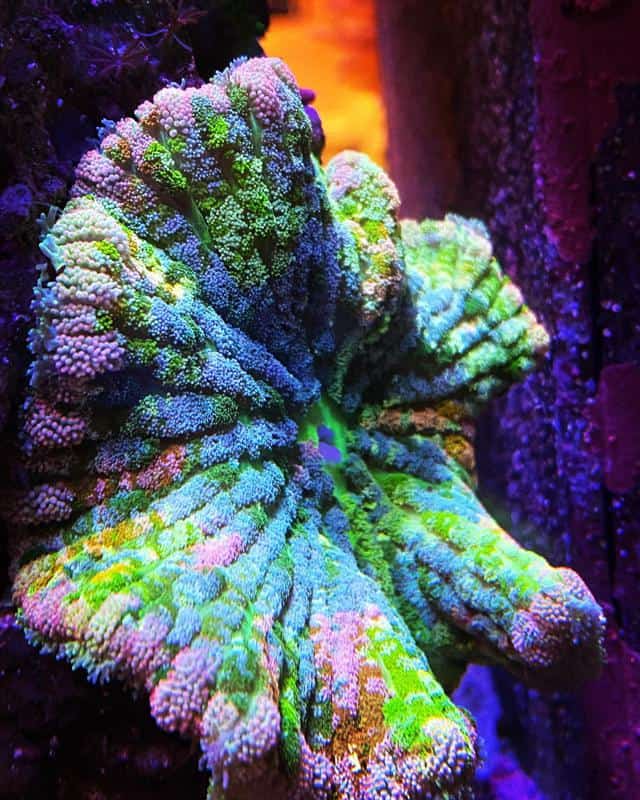
The Adhesive Anemone (Cryptodendrum adhaesivum) is the easiest species to identify since it looks like a pizza crust when settled down in the substrate.
With a round shape, tiny tentacles, and thickly ridged edges, they have been popularly labeled and sold in aquarium shops as the pizza anemone.
The Adhesive Anemone has one of the tiniest tentacles in the sea anemone family. Their tentacle can only protrude up to a maximum length of 5 mm. Despite being safe for human skin, their tentacles can still sting tiny fish and shrimps.
Beaded Anemone
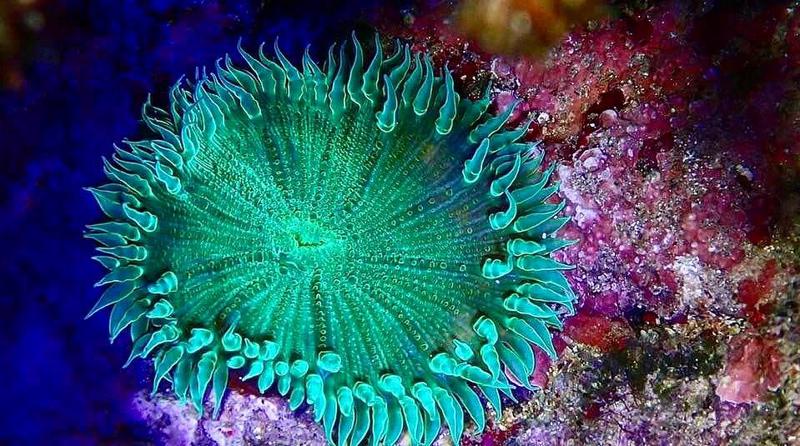
Consider having a Beaded Anemone (Heteractis aurora) if you have a thick sandy substrate.
When you introduce this sea anemone to the tank, you will see that they will bury themselves in gravel or sand. Do not expect they will anchor themselves in large solid objects like rocks and boulders.
When settled down, they look like a pizza anemone. But instead, their tentacles are longer with a bead-like protrusion, thus its name.
The Beaded Anemone is one of the few species preferred to be lived by several species of anemonefish. In particular, the beaded anemone is the favorite home for Clark’s clownfish.
Sebae Anemone
Do you plan on keeping a clownfish? If so, then also consider having a Sebae Anemone (Heteractis crispa) .
This sea anemone has long tentacles reaching up to 15 cm long and prefers to live in solid objects slightly covered with sand.
Aside from having a round tip, the tentacles have a concentric circle arrangement. As an effect, it creates a maze of smooth branches that a clownfish can swim through.
The Sebae Anemone is unique since its tubular body has white wart-like growths. However, you can only see it when the tentacles retract.
Corkscrew Anemone
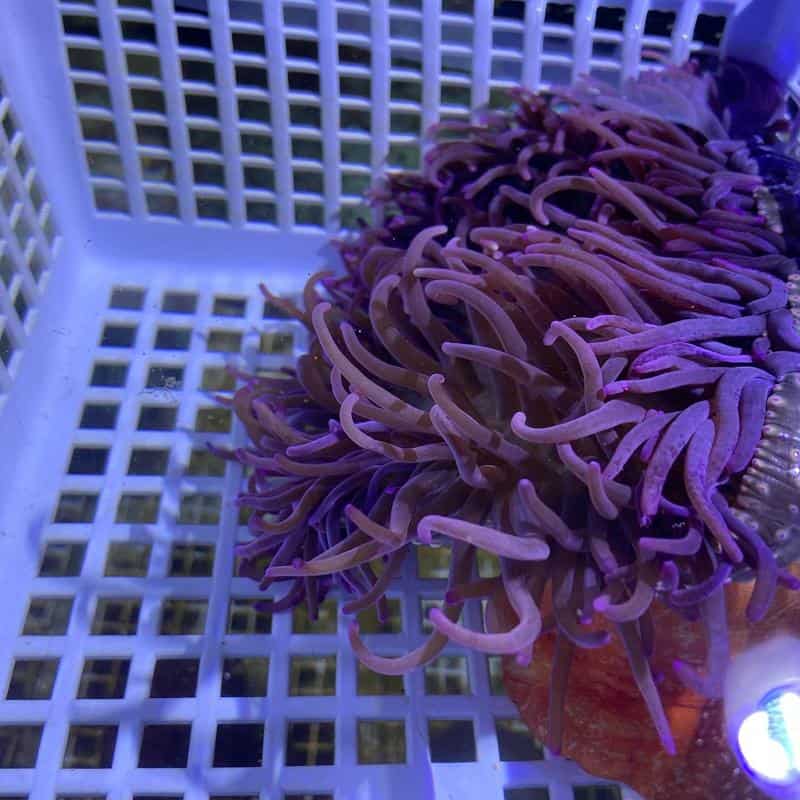
The Corkscrew Anemone (Macrodactyla doreensis) is a burying species that prefers soft and sandy substrate. When settled down, you can see the protrusion of their long tentacles, which extends up to 2 inches long, thus their other name: the long tentacle anemone.
There should be proper spacing between Corkscrew Anemones. Otherwise, they can extend their tentacles further and attack nearby sea anemones.
Although their tentacles are long, there are only a few. It is why their central mouth is exposed and not covered.
Once in a while, the Corkscrew Anemone will disappear from plane sight. But don’t worry, as the anemone is just hiding, and this species is known to retract entirely under the sediment.
Haddon’s Carpet Anemone
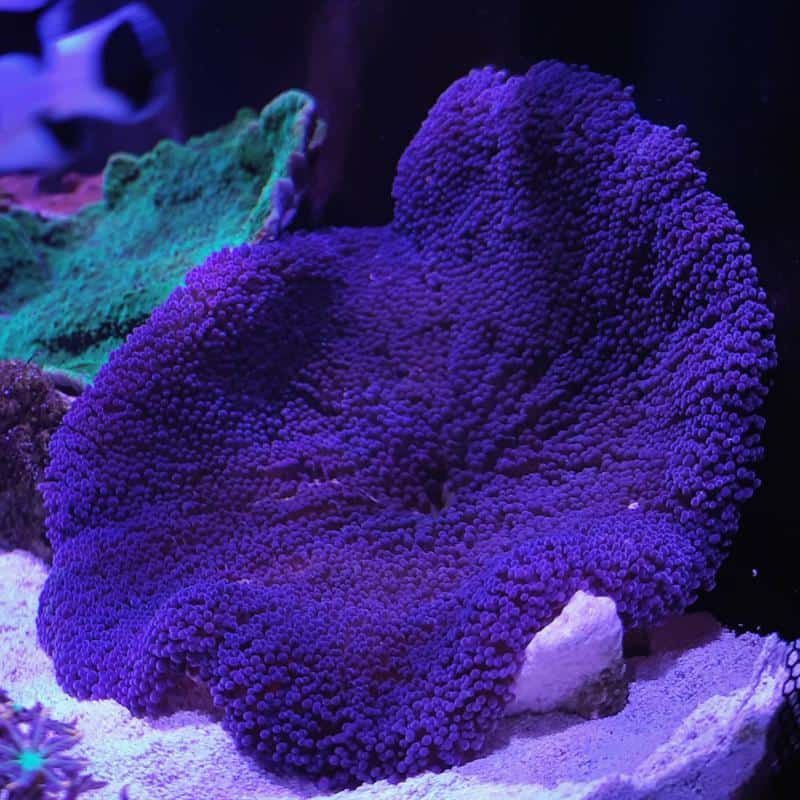
Sea anemones can transfer their location and can be worrisome, especially for newbies. If you want a stationary sea anemone that stays in one place, consider having Haddon’s Carpet Anemone (Stichodactyla haddoni).
Also known as the Saddle Carpet Anemone, their growth is encrusting. Instead of growing vertically, it prefers to spread out with its tiny tentacles starting to become visible. They are fast growers and can occupy a substantial portion of the substrate, making them ideal for large-sized aquariums.
Snake Sea Anemone
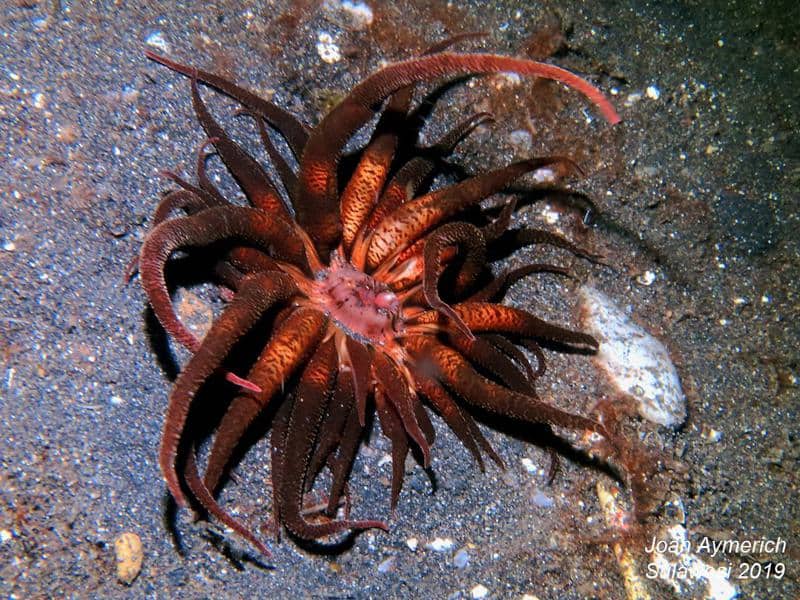
By this time, you are already aware that most sea anemone species pose no severe threats to humans. However, as the saying goes, there is always an exception.
According to the Guinness Book of World Records, the most toxic sea anemone is the Matamalu or the Giant Mushroom Anemone (Rhodactis howesii). Although it has no effect when touched by human skin, its paralytic poison can kill a human when eaten uncooked.
However, Matamalu is a sea anemone-like coral, and not a true sea anemone.
The Snake Sea Anemone (Actinostephanus haeckeli) is the rarest and most dangerous sea anemone in the world.
Also known as Haeckel’s Sea Anemone, the slightest touch of the snake-looking tentacles will trigger the release of high amounts of nematocysts causing blisters along with severe pain. The blister will eventually lead to skin ulceration, and the part that has come in contact may leave scars.
And sad to say, a few saltwater hobbyists keep them in the aquarium.
Related: Best Clownfish Tank Mates
Sea Anemone: FAQs
What Happens when A Sea Anemone Dies?
Aside from degrading, the nematocysts toxin in the sea anemone’s body and tentacles are released in the water and can harm other residents. You should immediately remove any dead sea anemones.
Do Sea Anemones Clean the Water?
No. The only way for an invertebrate to clean the water is to take in water as they scrape and filter for food. In the case of sea anemones, they are not filter feeders.
What Happens if I Add Sea Anemones to An Immature Reef Tank?
At first, nothing will happen. However, as water parameters are unstable in an immature tank, the health of your sea anemone will slowly deteriorate.
The tentacles may deflate, the bright color will fade away, and transferring to a new location will be more frequent until they get stuck in the filter system.
How Do I Know if My Sea Anemone Is Hungry?
Look at their central mouth, as it always gives a clear indication. When you see their mouth slightly open, it means they are hungry and ready to take in food.
Conclusion
Keeping sea anemones is not an easy task. Aside from the one-year waiting period for a reef tank to mature, the tasks behind its maintenance and monitoring is extensive and laborious.
If you are unsure about sea anemones and cannot commit time, we suggest you consider other species that are easy to handle.
However, if you devout time and effort, we guarantee that the returns are rewarding. Not only have you increased the aesthetics, but your saltwater tank will also become a model demonstrating symbiosis, especially if keeping sea anemones is simultaneously done with clownfish.
